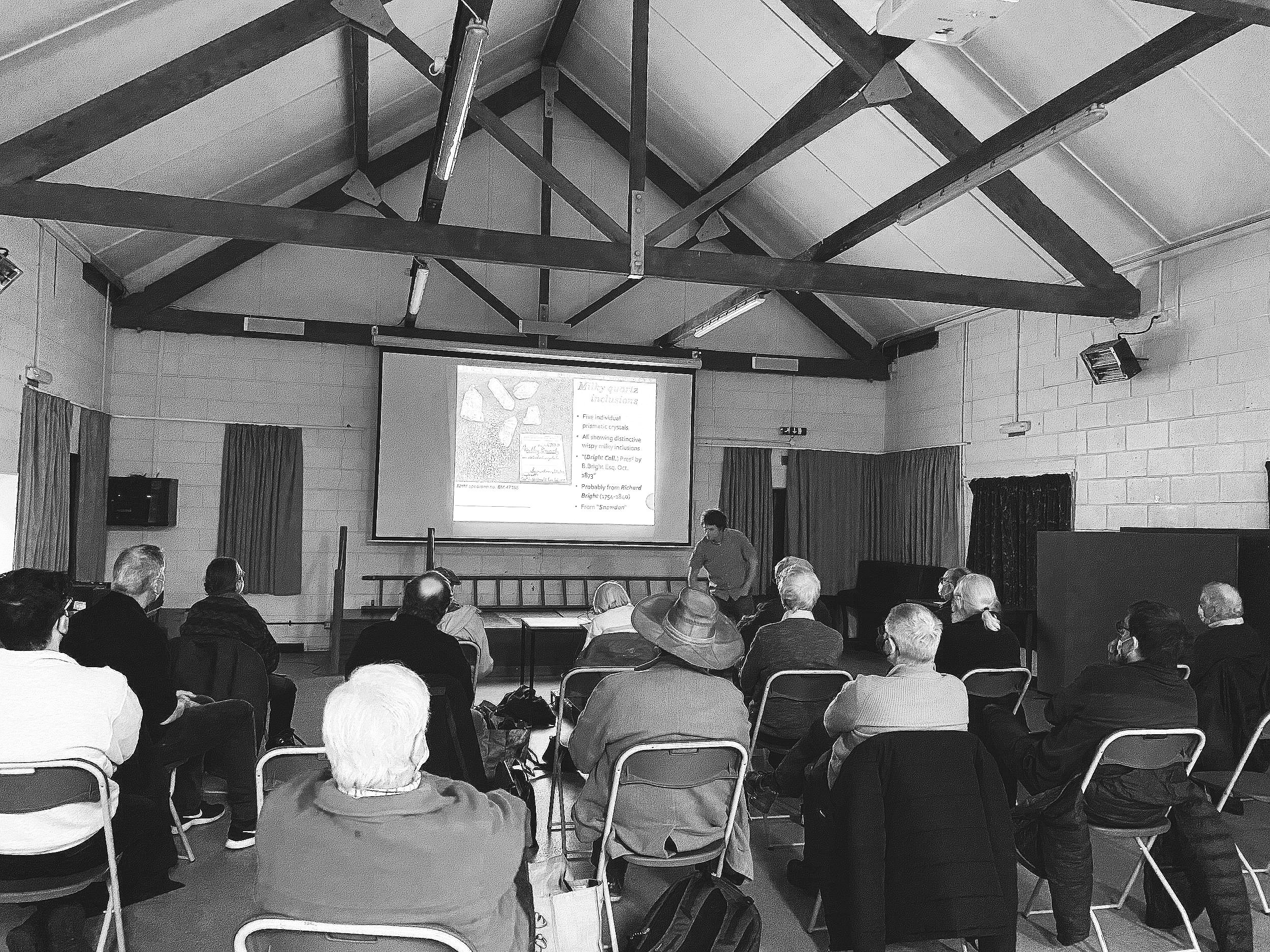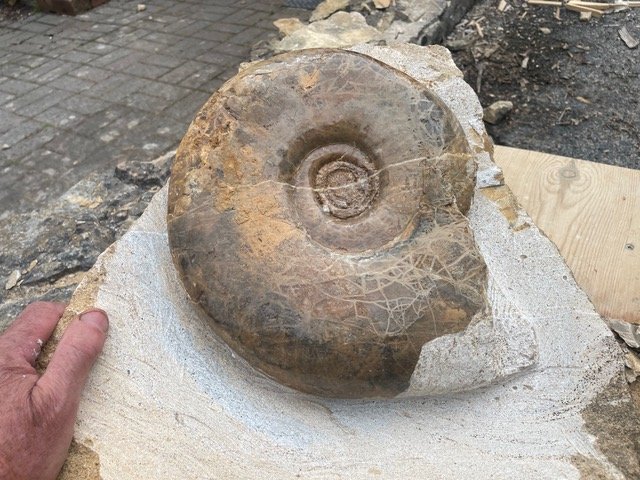
Previous Talks in Detail.
Dorset Beaches
By Tom Carr
After a quiet January, The Cheltenham Mineral and Geological Society kicked off the new season with a fantastic talk by Tom Carr on Friday 14th February.
Tom will took us on a tour of his favourite Dorset beaches, sharing insights into the fossils you can find at each spot. With his expertise in both localities and specimens, it was an extremely informative and engaging evening.
Christmas Meeting
13th December.
At the end of a season of top class lectures by really informative and entertaining speakers, those who turned out for the Christmas meeting were able to enjoy presentations by members on ichsyosaur remains in Gloucestershire, early Scottish fossil collector Hugh Miller (the Scottish Mary Anning), recent geological research into the age of the crystal-lined caves in Tytherington and Chipping Sodbury quarries, and the richness of the Whitby area for collectors of not only Jurassic fossils but also dinosaur footprints. This last speaker, Mark Baggott, brought with him a three-dimensional therapod footprint from the beach near Whitby, and this was judged the best presentation. Coffee, mince pies and Christmas cake were also enjoyed by all.
Blockley Fossils
By Alan Banyard.
CMGS member Alan Banyard talked about his extensive collection of Blockley fossils. He is a widely acknowledged expert on the location and its unique suite of jurassic fauna, it was wonderful to see his examples of all the different discoveries he has found in our frequented field trip site.
‘The relative “value” & potential of the UK’s in-situ dinosaur track sites’
By Professor Mark Butler
“Fossil tracks are a key means of determining the palaeoecology and distribution of dinosaurs through time and complementary to the skeletal record. They are also amongst the most popular and recognisable trace fossils encountered by the public and are major draw to some areas of the UK. Thus, beyond scientific value, they provide key aesthetic and pedagogic opportunities in the tourism and education sectors. However, the protection, monitoring, communication, and scientific knowledge of dinosaur track sites varies considerably. In this talk I will review our knowledge of in situ dinosaur track sites within the UK and assess their relative scientific and cultural ‘value’ using a quantitative system.” - Butler
‘A Collecter’s View of the Ammonites of Great Britain.’
By Dr Mark O’Dell
“The presentation looks at ammonites in the geological record and then takes a collector’s view of a number of sites in the UK that have yielded spectacular specimens. I will close with some words on the preparation of these fossils.” - Dr O’Dell.
We started with some insight into how the society is doing, what we have to look forward to in the coming months and early next year, and finally opening up with any questions for members to put forward to committee members.
The early evolution of animal life and the generation of form.
By Dr Frankie Dunn, Senior researcher, NERC Independent Research Fellow, Oxford University Museum of Natural History.
'“The rise of the animals was a profound transition in the History of Life; for the first-time organisms were able to engineer the environment around them, altering
geochemical cycles, building complex ecosystems and diversifying into a myriad of forms. However, the rise of the animals is also one of the most controversial episodes in Earth History.
My novel approach to the study of these organisms has been to investigate their growth and development across whole populations of taxa. In this talk, I will introduce my work on the fossils of the Ediacaran Period and set out the case for an animal affinity, but also discuss new
fossil finds which suggest that the oldest yet known crown-group members of animal phyla lived and died hidden amongst the fronds.” - Dr Frankie Dunn.
Pterosaurs and CT scans: combining the old and the new
By Dr Liz Martin-Silverstone, Paleontology lab manager of the Bristol Paleobiology group at the University of Bristol.
‘Pterosaurs, extinct flying reptiles, include the largest animals to ever fly but we are only just starting to understand how they did this. We can now combine traditional palaeontology with new technology such as CT scanning to better understand how they moved around, and to gain information previously inaccessible in fossils. In this talk I will give some example’s from my research of how CT scans have contributed to pterosaur studies and palaeontology as a whole, and how we can combine old methods with new technology.’ - Dr Liz Martin-Silverstone.
The Evolution of the First Trees
10/05/24
This talk will describe the discovery of the oldest fossil forests known, in Somerset, New York State and Svalbard. We will also consider how reconstructions of the oldest trees, and understanding of how they grew, have changed over time as new discoveries of fossil plants of Devonian age have been made. Together, the new data allows new visualisations of the oldest forested landscapes, and allows better understanding of how the evolution of trees and forests was a crucial step in the development of the Earth system.
“The recent discovery of a small outcrop of fossil forest in Somerset is important because there we can see the oldest record of in situ tree bases. The trees are of an extinct form known as cladoxylopsids. This is confirmed by the presence of tree trunks of cladoxylopsids at another nearby site, and branches at another. These cladoxylopsids were the first type of tree to appear in the fossil record, and this is the only place where we can see them in their life position before the advent of woody trees only a few million years later. The Somerset discoveries are therefore a unique insight into the transition to a forested planet.”
- Christopher Berry







